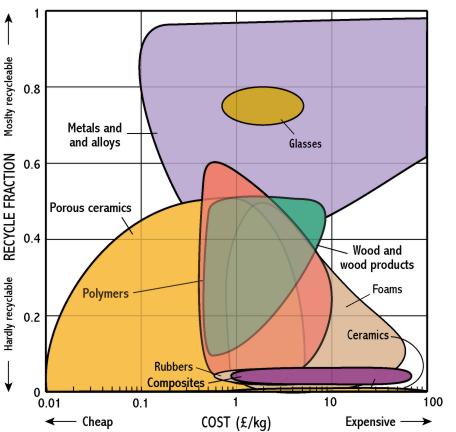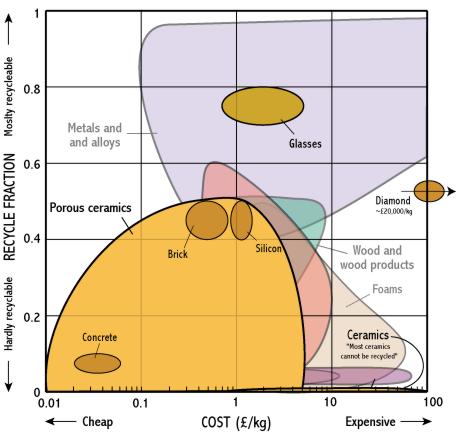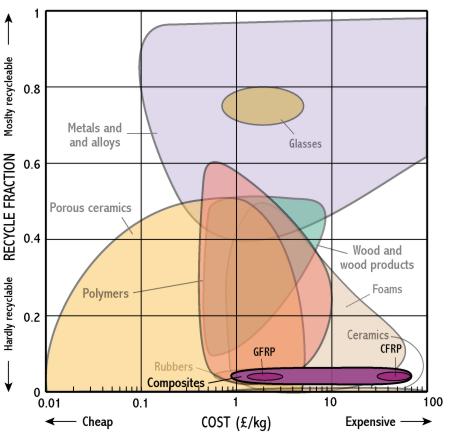Recycle Fraction - Cost
Class level

Metals and alloys

Ceramics

Polymers

Wood and wood products

Composites

General Information
- The fraction recycled is that fraction which can be recycled cost-effectively
- High recycle fractions are not necessarily achieved at present
- Recycling involves returning the material to its raw form, but re-use is sometimes more energy efficient
- This chart is useful for identifying materials which are heavily recycled, and exploring those which are not
- Naturally great efforts are made to recycle expensive materials (few diamonds are ever thrown away!)
Physical Insights
- Despite high costs, composites prove difficult to recycle – most are based on thermosets, which cannot be remelted, and in all composites it is difficult to separate fibres and matrix
- Thermoplastics are often used interchangeably (making separation difficult) or used in low density, large volume objects (such as bottles) making recycling costly
- Metals are particularly suited to recycling as they can be easily sorted, remelted and shaped; they are often used to make large or uncomplicated/plentiful objects (e.g. ships, cars, drinks cans, piping)
- Thermosets cannot be reshaped leading to low levels of recycling, and ceramics are almost never recycled
Example Uses
- If disposable items cannot be made from sustainable materials , recycling options should be considered
- As packaging is used only once, environmental design can be achieved by making it reusable or recyclable
- At present a very high fraction of each car is recycled (changing to composites or complex alloys could make them less recyclable)
Simple Questions
- Why is brick heavily recycled?
- How is steel separated from other metals for recycling?
- Select materials for a disposable cup.
- Select materials for a pizza box.
- Select materials for a car body.
Further Questions
- Why are aluminium drinks cans heavily recycled despite their low weight?
- Ink jet cartridges are good examples of disposable items which are best reused rather than recycled, can you think of others?
There are 2 separate populations for this class to improve clarity. Move the mouse over different parts of the class name to reveal each one.
Select chart:





